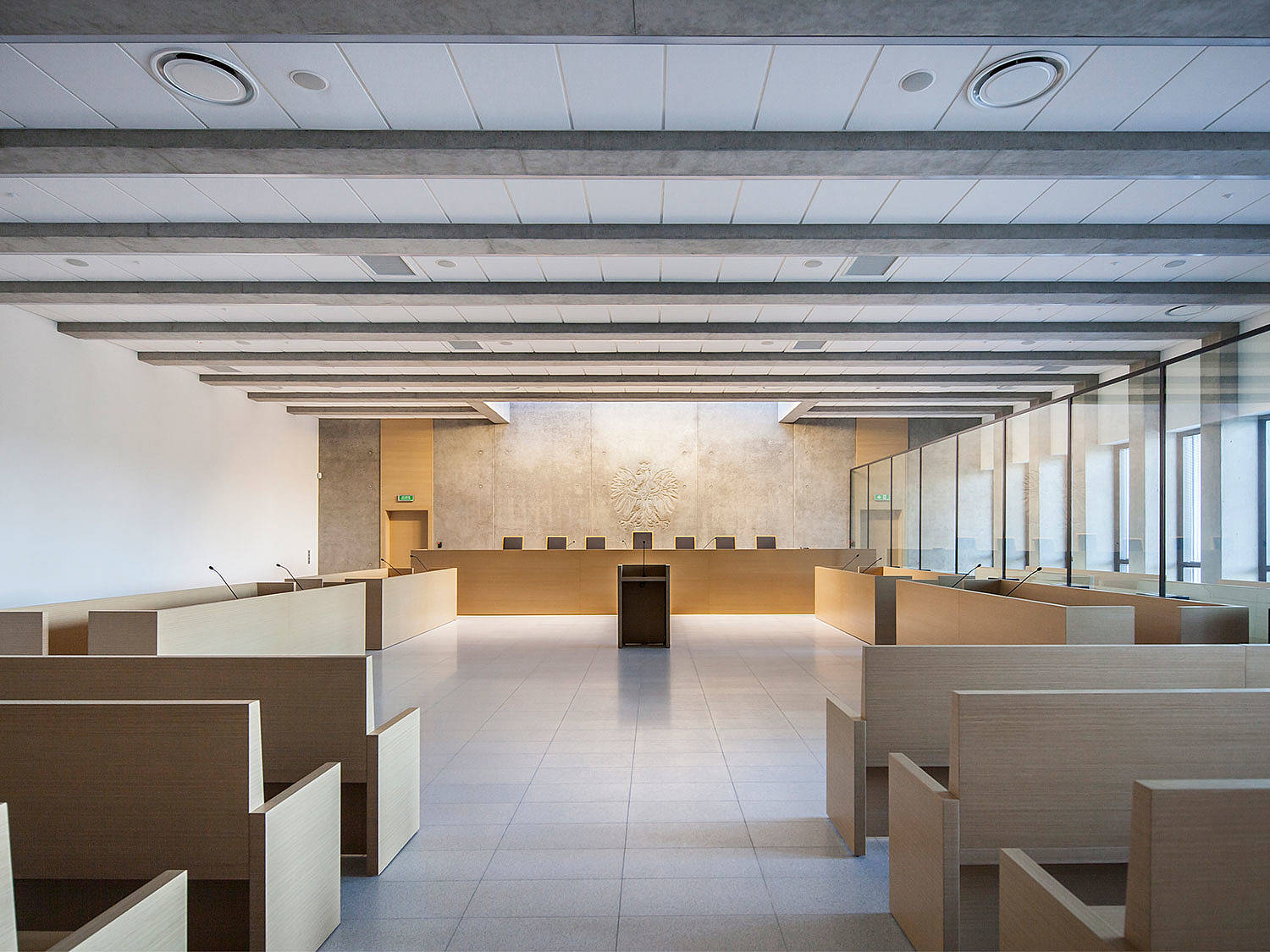Court house, Siedlce, Poland
The courthouse in the Polish city of Siedlce impresses with its monumental dimensions and elaborate details. Architectural concrete plays the starring role.
In a place where crimes are heard and justice is delivered, clear lines and strong proportions provide support and serve as a compass for orientation. The Polish firm Hermanowicz Rewski (HRA) based its design of the new regional court in the Polish city of Siedlce on historic architecture: “The main inspiration for our design of the regional court in Siedlce was the classical architecture of Ancient Greece,” said the founder of HRA, Stansislaw Rewski.
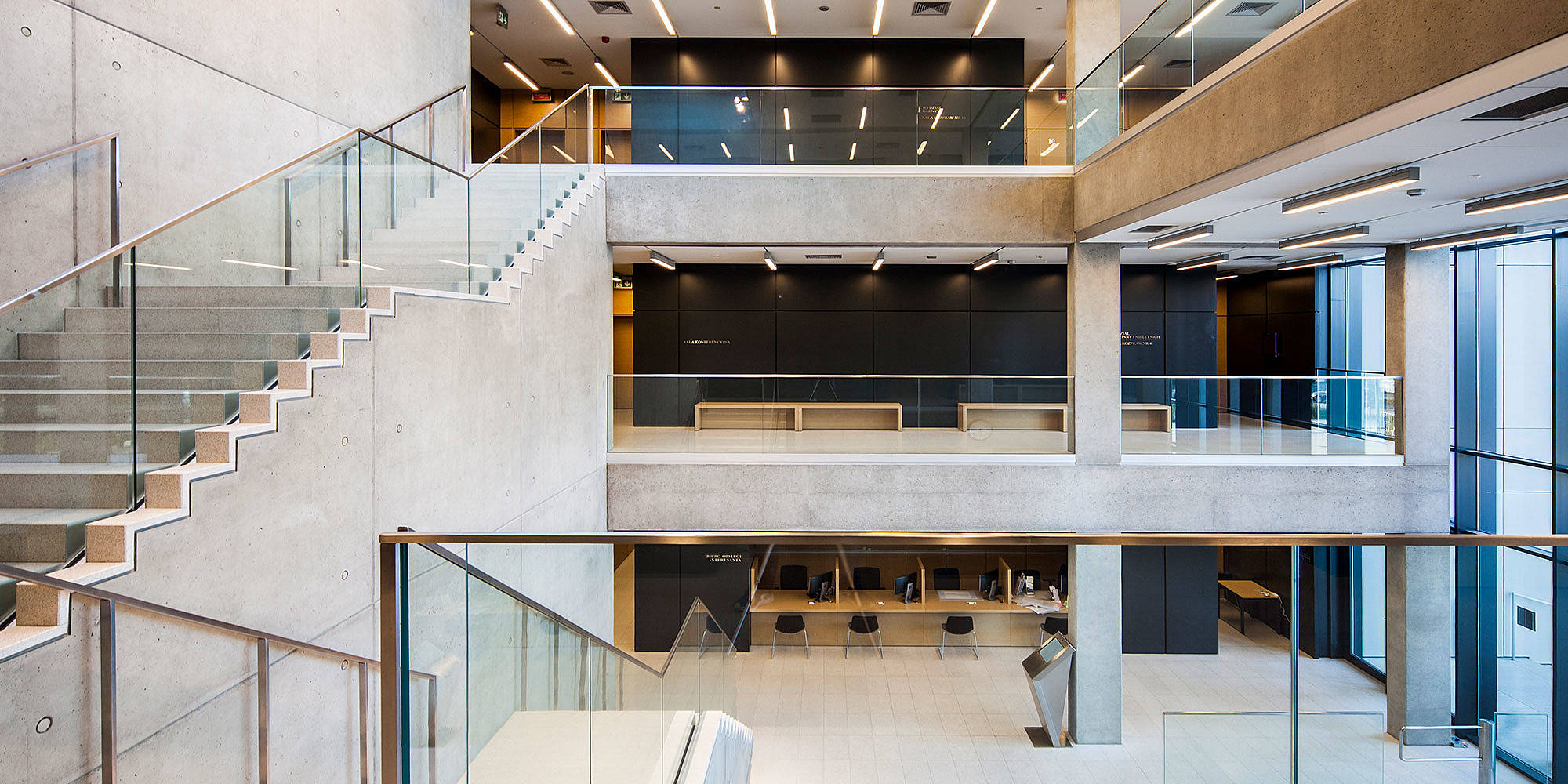
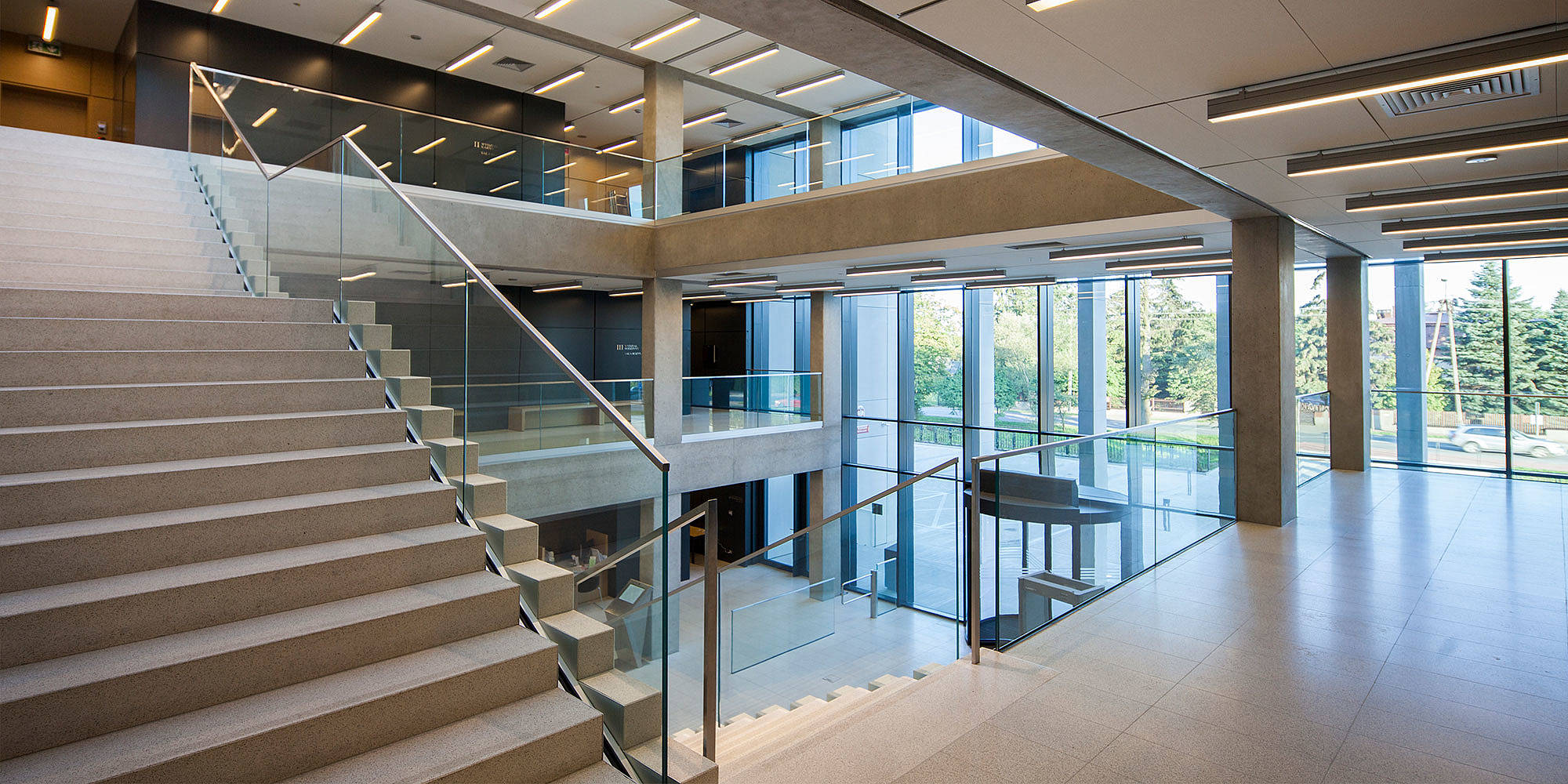
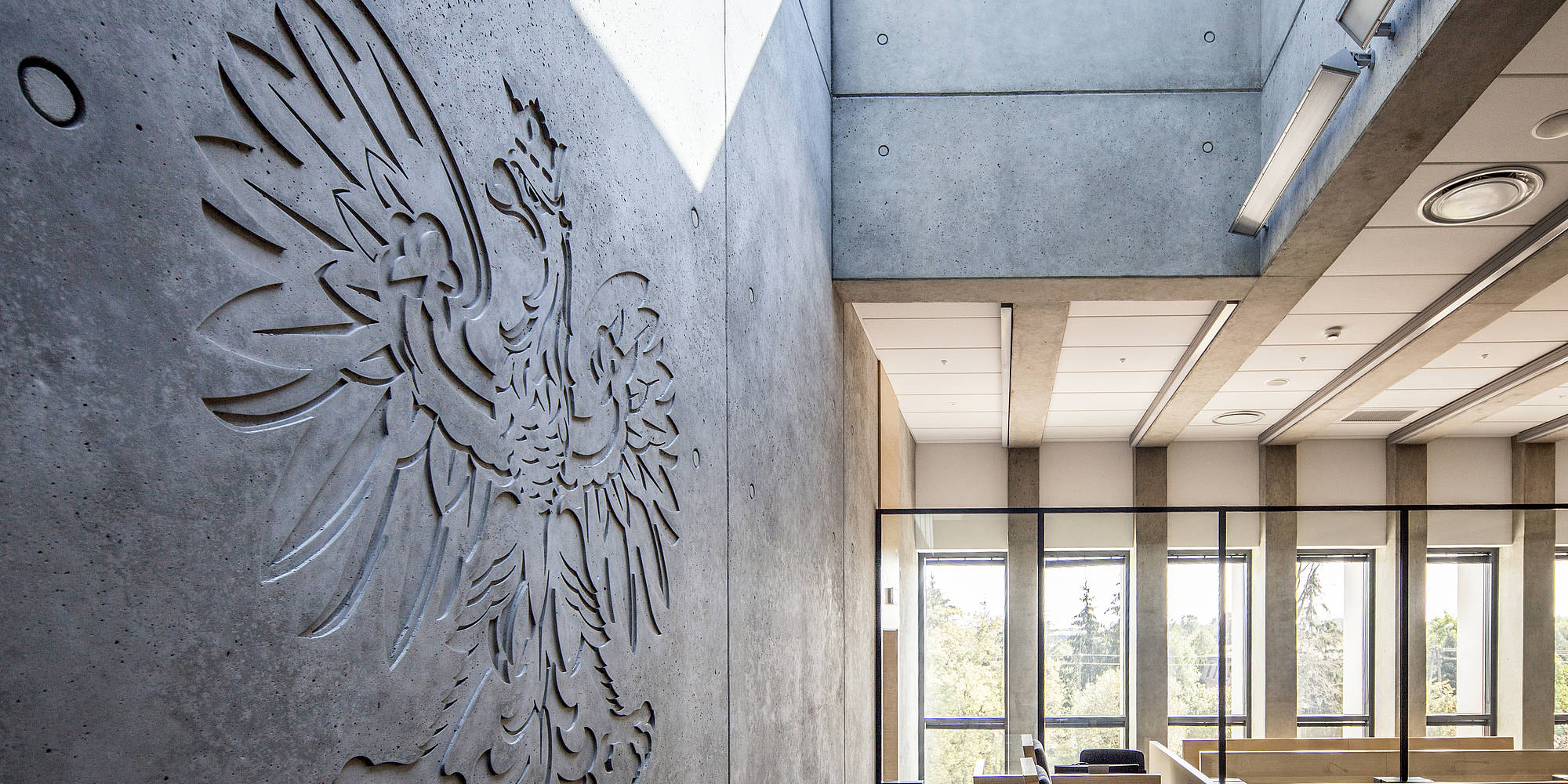
The architects were awarded the contract in 2011 and subsequently took over the planning process from planning permission through to completion of the building in 2017.
Located on a large rectangular plot, the ground first had to be raised by approximately one meter due to the very high groundwater level. The plot was filled to create a platform that served as the base of the building.
The main aim of the design was to create a monumental building that is easily associated with the power of the judicial system and at the same time is people-friendly,” said the architects. The three-story high building is therefore designed as a block with a façade that is defined by a vertical rhythm in the form of pillars. The pillars are aligned in such a way that they correlate with the horizontal boundaries of the car park in front of the building.
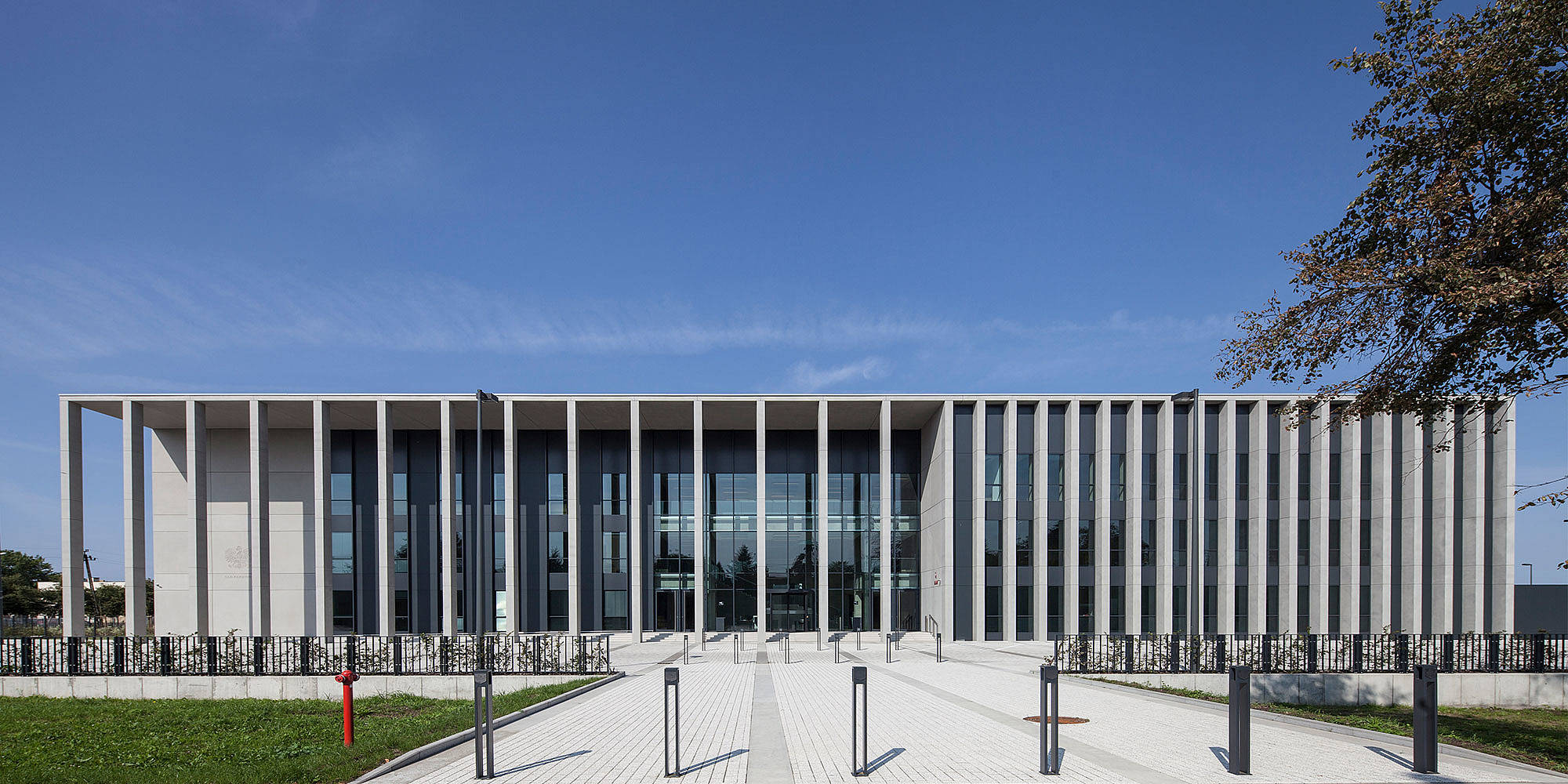
The main entrance is situated at the corner of the building and is accessed through a passageway framed by pillars. The architects created two courtyards within the complex which are accessible via the employee car park at the rear of the building.
To meet the various security requirements of the building, the architects opted for a split floorplan. The expansive lobby covers all three stories and is the focal point of the building; all public areas are accessible from here: Courtrooms, reading rooms and registry services. Offices and administrative rooms are located at the rear of the building and are protected by a security check. It is connected to the lobby, but is mainly accessible via a separate entrance for employees.
For the architects, it was important that their design expressed the stability of the law and at the same time exhibited the transparency of the judicial procedure. “We wanted to find a material that underlined both the monumental size of the institution and a certain rawness,” says Michal Chrzanowski, a partner at HRA. For HRA, the key to meeting this requirement was the use of architectural concrete. During the planning process, the concrete elements were divided into two categories: All the internal walls and pillars were to be cast-in-situ, the façade elements and the concrete slabs around the building were made at the factory. This division also ensured efficient construction progress. The RECKLI matrix, which is ideally suited to the production of exposed concrete surfaces with the requirement of architectural concrete class 4, was used for the smooth concrete elements.
Besides the entrance, the highlight is the concrete reproduction of the eagle from the Polish coat of arms in the foyer and in two courtrooms. For this the architects made a special sized individual matrix which imprinted the 1.60 meter wide eagle in the concrete. For the architects, the concrete surfaces, the airy entrance area and the rhythmically arranged pillars are the most significant features of the project.
